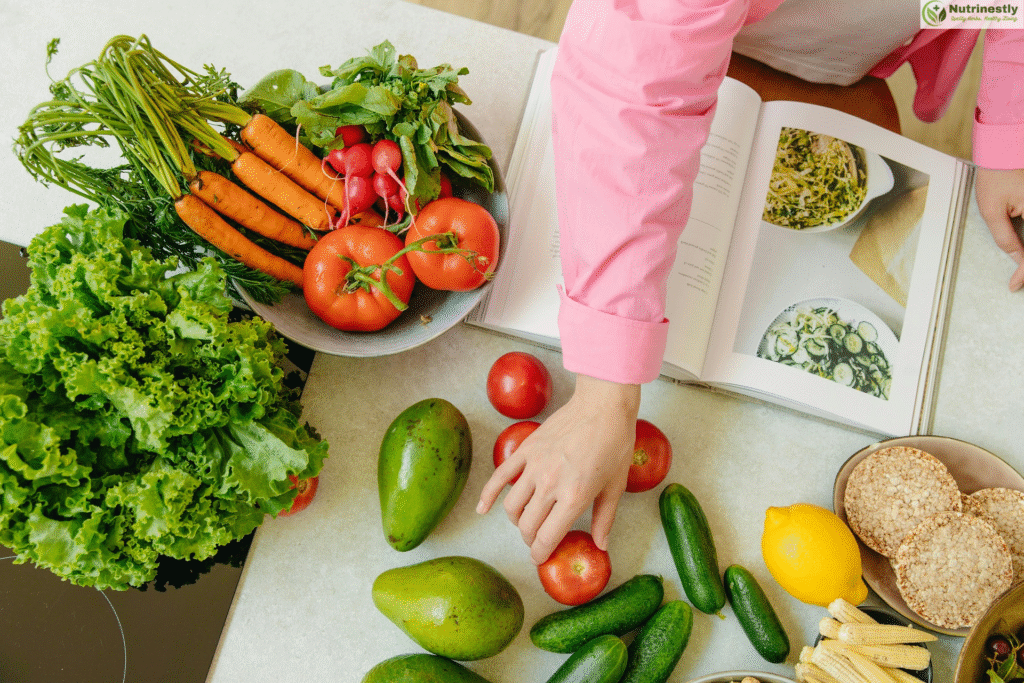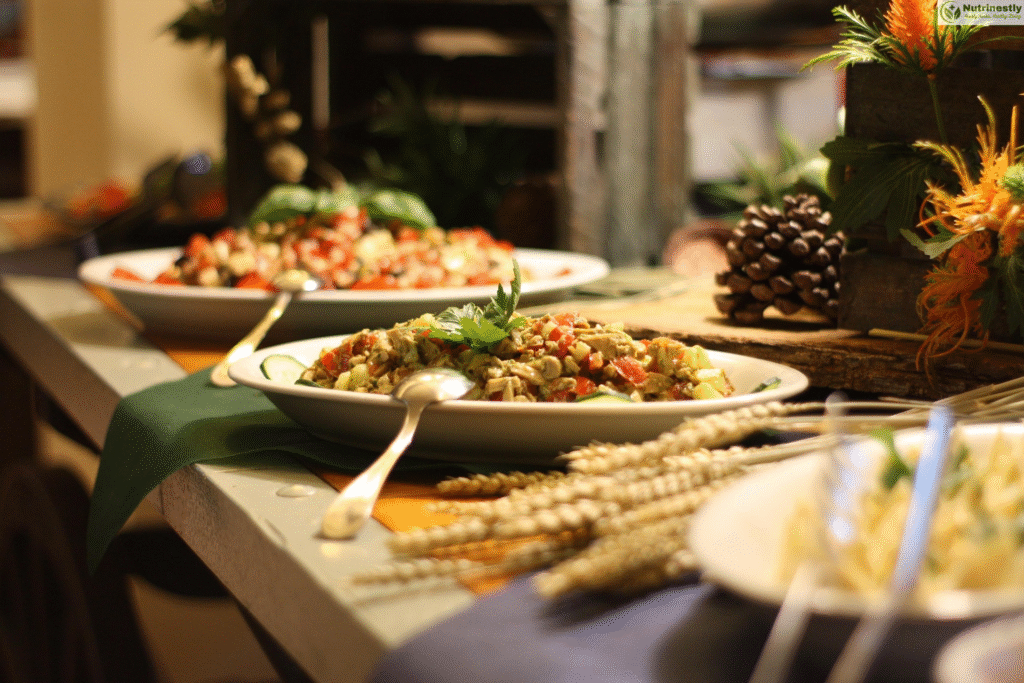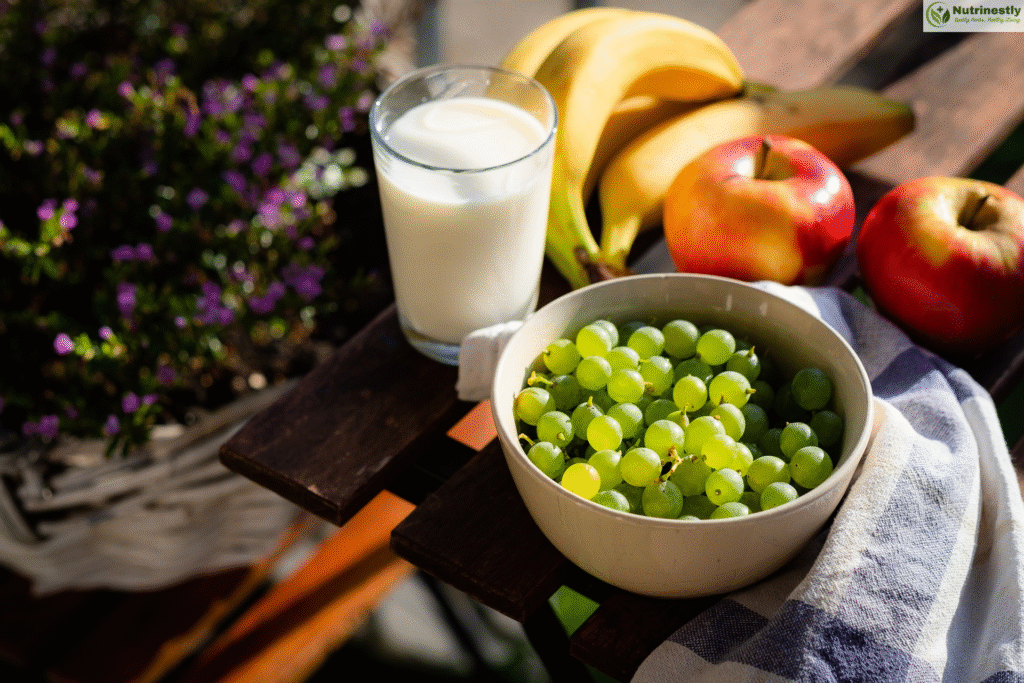
Introduction: Why Inflammation is the Silent Culprit
Have you ever felt constantly bloated, sluggish, or achy for no obvious reason? You’re not alone, and chances are, chronic inflammation is playing a quiet but powerful role behind the scenes.
While inflammation is your body’s natural defense mechanism against harm, chronic inflammation—the kind that lingers unnoticed—can contribute to everything from fatigue and joint pain to heart disease, diabetes, and even depression.
Fortunately, the food we eat can be our most powerful weapon against it. Welcome to your 21-Day Anti-Inflammatory Diet, not just a meal plan but a full-body reset that could change how you feel, look, and live.
Chapter 1: Understanding Inflammation
Inflammation, in essence, is your body’s own defense mechanism. When you become ill or hurt, your immune system springs into action to assist you with healing. That’s the beneficial type of acute inflammation. But when it persists long after the “danger” has passed, it can creepily begin to wreak havoc on healthy cells and tissues. That’s where it turns chronic and nasty.
You may not notice it, but you may experience it subtly: that post-lunch crash, stomach discomfort, unexplained pains, or skin eruptions that simply refuse to go away. You may experience your moods swinging up and down, or you may feel “puffy” and lethargic despite the amount of sleep you get.
What’s driving that chronic inflammation?
It’s usually a mixture of poor sleep, stress, a lack of physical activity, and ultra-processed foods—something most of us live with on a daily basis. But by making a series of small adjustments to your habits and your food, you can break that cycle and get your body back into balance.
Chapter 2: The Anti-Inflammatory Power of Food
Here’s the empowering fact: each bite you eat can either fuel the fire of inflammation or quell it.
Top Anti-Inflammatory Foods
- Leafy greens (spinach, kale)
- Berries (blueberries, strawberries)
- Fatty fish (salmon, sardines)
- Nuts and seeds (walnuts, flaxseeds)
- Olive oil
- Turmeric and ginger
- Green tea
- Fermented foods (kimchi, sauerkraut, kefir)
By opting for these foods more frequently, you’re not only eating better; you’re actually working to heal your cells, stabilize your energy, and brighten your mood.
And, of course, to truly give your body a break, it’s worth reducing the usual suspects: sugar, processed carbs, processed meats, fried foods, and artificial preservatives. These have been shown to cause inflammation and sap your energy in the long run.
This 21-day program will assist you in exchanging the toxic stuff for meals that are nutritious, filling, and profoundly restorative.
Foods to Avoid
- Refined carbs (white bread, pasta)
- Sugar-laden snacks and drinks
- Processed meats
- Hydrogenated oils
- Fried and fast foods
- Artificial sweeteners
Chapter 3: The 21-Day Plan Breakdown

This is not about tracking calories or weighing every bite. This is about progress, not perfection. Each week of the plan is structured to follow the previous week, beginning with a gentle reset and concluding with tangible, lasting change.
Week 1: Clean Out & Reset
Goal: Eliminate common inflammatory foods and begin flooding your body with nutrients.
Key Focus Areas:
- Eliminate sugar, dairy, gluten, alcohol
- Drink 8–10 glasses of water/day
- Add one green smoothie or salad/day
- Begin a food journal to track energy, digestion, mood
Week 2: Rebuild & Rebalance
Goal: Introduce powerful anti-inflammatory foods and build consistency.
Key Focus Areas:
- Eat colorful, whole foods at every meal
- Add fermented foods 3x/week
- Try new herbs/spices (turmeric, cumin, basil)
- Practice 10 minutes of mindful movement daily (yoga, walking)
Week 3: Thrive & Sustain
Goal: Strengthen habits and transition into a sustainable lifestyle.
Key Focus Areas:
- Refine portion sizes and intuitive eating
- Create a go-to list of recipes you love
- Add natural movement throughout your day
- Reflect on changes: energy, skin, sleep, digestion
Chapter 4: Sample Weekly Meal Plans
Rather than strict meal plans, here’s what a typical day might look like in every phase of your journey:
Week 1 Sample Menu
Breakfast:
- Green smoothie (spinach, banana, flaxseeds, almond milk)
- Chia pudding with berries
Lunch:
- Quinoa salad with roasted veggies and olive oil
- Lentil soup with turmeric and garlic
Dinner:
- Baked salmon with steamed broccoli and sweet potatoes
- Stir-fried tofu with bok choy and sesame seeds
Snacks:
- Apple with almond butter
- Hummus and cucumber slices
Week 2 Sample Menu
Breakfast:
- Overnight oats with blueberries and chia
- Avocado toast on gluten-free bread with hemp seeds
Lunch:
- Wild rice bowl with kale, beets, and tahini dressing
- Chickpea salad with olive oil and herbs
Dinner:
- Grilled shrimp with quinoa and roasted carrots
- Zucchini noodles with pesto and cherry tomatoes
Snacks:
- Handful of walnuts and green tea
- Sliced pear with cinnamon
Week 3 Sample Menu
Breakfast:
- Matcha smoothie bowl with pumpkin seeds
- Scrambled tofu with spinach and turmeric
Lunch:
- Roasted veggie and lentil wrap (gluten-free)
- Miso soup with seaweed and edamame
Dinner:
- Grilled chicken breast with sautéed greens and squash
- Cauliflower rice stir-fry with tamari sauce
Snacks:
- Kombucha and trail mix (no sugar added)
- Greek yogurt (if tolerated) with flaxseeds.
Chapter 5: Lifestyle Tweaks That Supercharge Results

Your diet is important, but so are your daily routines. These easy lifestyle changes dial down inflammation, boost your outcomes, and make you feel more balanced all around.
1. Get Moving Gently
Begin by getting your body moving in gentle, playful ways every day. You don’t have to go to the gym; just a walk, a stretch class, or a dance party will do.”
2. Prioritize Sleep
Inflammation skyrockets when you’re sleep-deprived. Aim for 7–9 hours of restorative sleep, and build a calming pre-bed ritual (herbal tea, journaling, screen-free time).
3. Manage Stress
Chronic stress releases cortisol, which fuels inflammation. Try:
- Deep breathing
- Meditation (start with 5 minutes/day)
- Gratitude journaling
- Nature walks
4. Stay Hydrated
Water helps flush out toxins and supports your digestion, joints, and skin. Add lemon, cucumber, or mint for variety.
5. Monitor and Reflect
Use a wellness journal to track:
- Your meals
- How you feel physically and emotionally
- Any improvements in digestion, energy, or pain.
Chapter 6: Supplements to Support Your Journey (Optional)
Although whole food must always be the priority, a few strategic supplements can assist your anti-inflammatory efforts.
Omega-3s, in the form of fish oil or algae, are well-known anti-inflammatory fighters. Turmeric (particularly with black pepper) can help reduce joint stiffness and pain. Probiotics promote gut health, and magnesium and vitamin D regulate mood, sleep, and energy.
As always, please consult your healthcare provider before you begin anything new, particularly if you’re on medication or have a health condition.
Chapter 7: What to Expect in 21 Days
Change does not always feel comfortable at first, particularly when your body is releasing old patterns and toxins.
Week 1:
- You may feel tired or foggy as your body detoxes.
- Cravings can spike; drink more water and eat whole foods.
- Some digestive changes (bloating, gassiness) are normal.
Week 2:
- Improved digestion
- Clearer skin
- Increased energy and fewer cravings
Week 3:
- Better sleep
- Enhanced mood
- Less joint pain
- Feeling lighter and more balanced
Chapter 8: Beyond 21 Days – Making It a Lifestyle
This 21-day journey isn’t about perfection it’s about direction. The real magic happens when you continue integrating these habits into your life.
Tips for Long-Term Success
- Follow the 80/20 rule (eat clean 80% of the time, enjoy treats 20%)
- Meal prep on Sundays or set “theme nights” (Meatless Monday, Fish Friday)
- Keep your kitchen stocked with anti-inflammatory staples
- Involve friends or family for support and shared meals
Final Thoughts: Your Body Is Listening. Feed It With Purpose
Chronic inflammation is not something you can eradicate overnight. But each self-loving meal you take informs your body clearly: “You’re safe. You’re supported. I’ve got you.”
This 21-day reboot isn’t about deprivation; it’s about renewal. It’s about taking back the glowing, vibrant you that’s been inside of you the whole time.
Begin small. Show up for yourself. And don’t forget you don’t have to do it alone.

